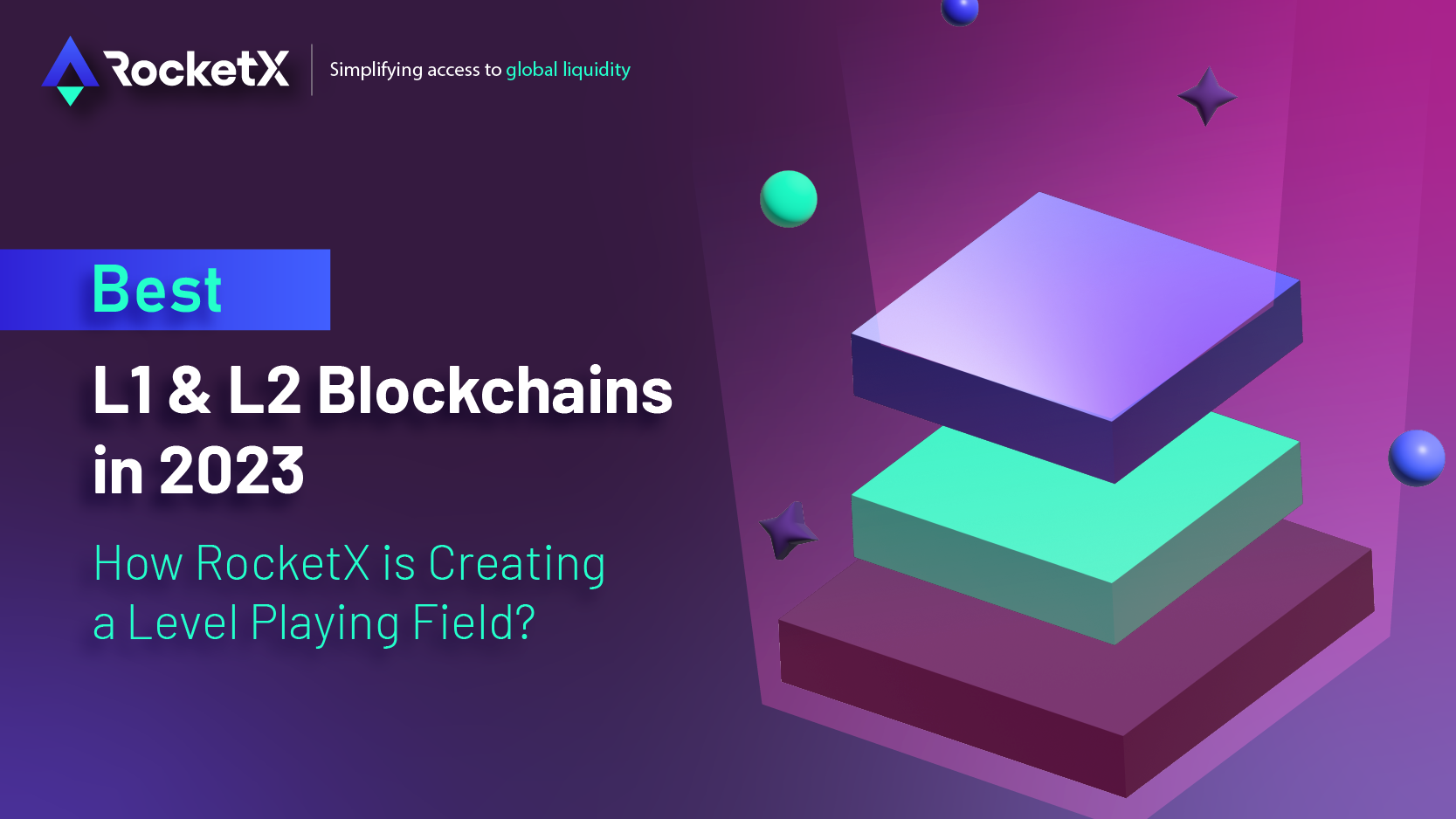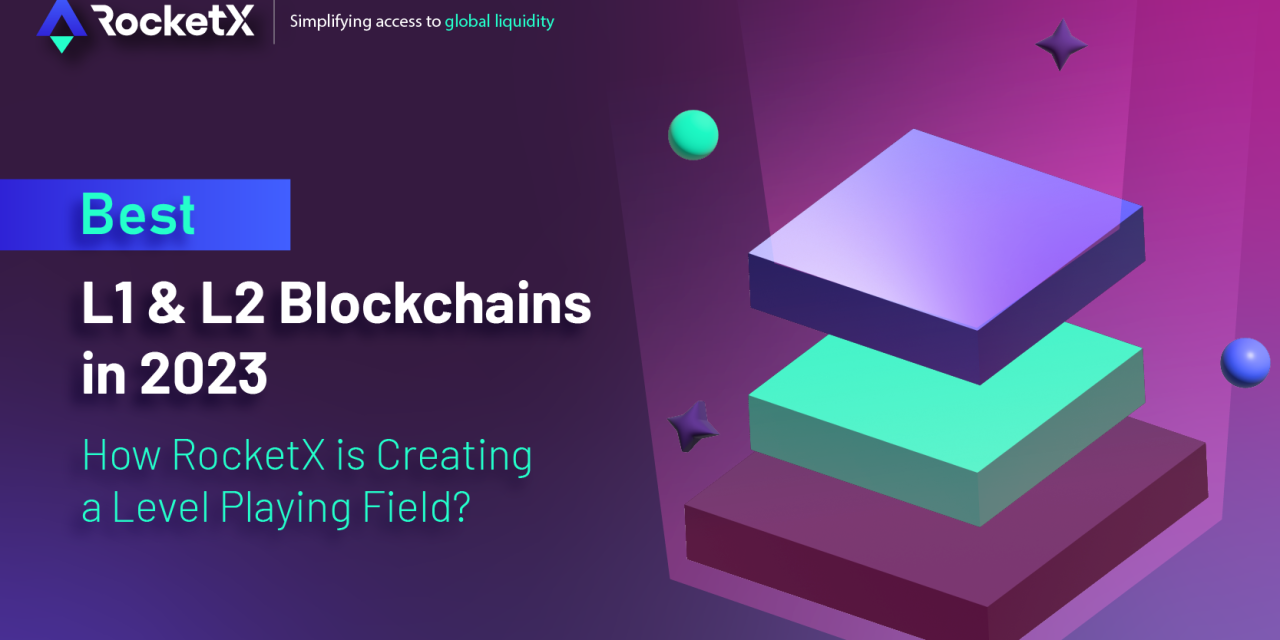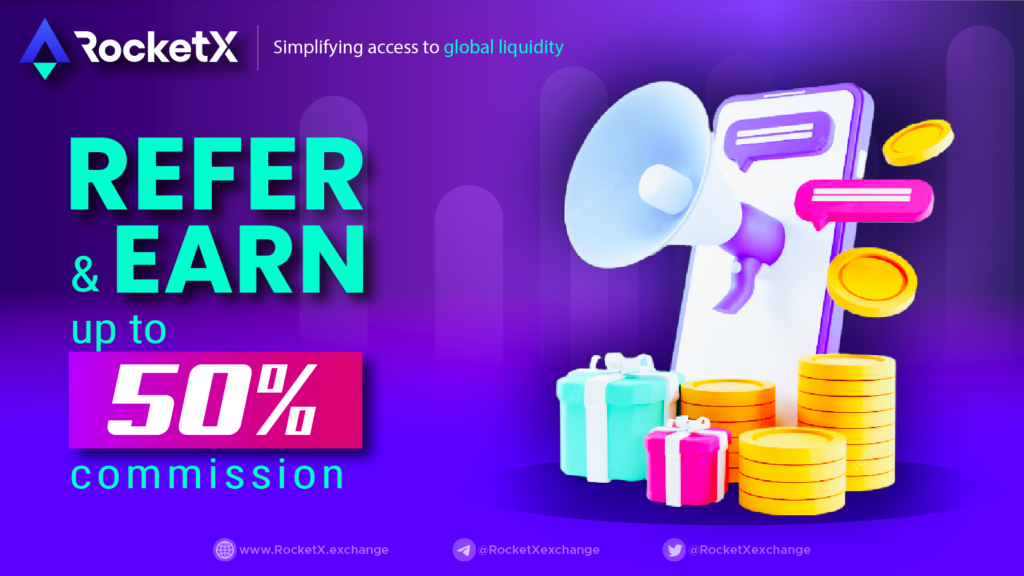
What Are Layer 1 and Layer 2 Blockchains
Blockchain technology has seen significant growth in recent years, with the introduction of layer 1 (L1) and layer 2 (L2) blockchains being one of the most notable developments.
The decentralized and secure properties of L1 blockchains have made them a popular choice for various use cases. However, their limited scalability meant that they could only handle a limited number of transactions per second, making them unsuitable for high-volume use cases. This led to the emergence of L2 blockchains, which are built on top of L1 blockchains to provide additional scalability and processing power. The development of L2 solutions was necessary to address the scalability issues of L1 blockchains, but it has resulted in interoperability challenges
This is where RocketX comes in, a new technology platform that aims to create a level playing field for L1/L2 blockchains by addressing their challenges and unlocking their full potential.
L1 Blockchains
L1 blockchains were the first type of blockchain to be introduced, and they remain an important part of the blockchain ecosystem. They offer decentralization and security, which are critical properties for a blockchain to function. These blockchains are designed to be resistant to tampering, censorship, and other malicious attacks, which makes them an attractive option for various use cases such as financial transactions, supply chain management, and identity verification.
However, L1 blockchains face scalability issues due to various factors, such as the Proof of Work (PoW) consensus mechanism, which requires a significant amount of computational power to validate transactions and maintain the network. This process can be slow and resource-intensive, leading to delays and high transaction fees during periods of high network congestion. Additionally, L1 blockchains have limited block size and frequency, which means they can only process a certain number of transactions per second.
Bitcoin, the first L1 blockchain network that uses PoW and has a block size of only 1 megabyte (MB), can only process about 10 transactions per second, which makes it unsuitable for high-volume use cases such as payment processing and global trade.
Best L1 Protocols in 2023
- Velas: Velas is a fork of Solana and has EVM compatibility, leveraging the best features of Solana’s EVM/EBPF hybrid chains to achieve outstanding performance at a lower cost.
- Bitcoin: The first blockchain that is still the most prominent L1 blockchain in existence. Its decentralized nature, security, and scarcity make it an attractive investment and store of value for many, and it is likely to continue to be a major player in the blockchain space for years to come.
- Ethereum: Ethereum is a decentralized blockchain platform that allows developers to create smart contracts and DApps. It also supports the creation of custom tokens, making it a popular choice for many blockchain projects.
L2 Blockchains
L2 blockchains, also known as Layer 2 solutions, are a type of blockchain that is built on top of an existing L1 blockchain, such as Bitcoin or Ethereum. They are designed to work in conjunction with L1 blockchains and can be categorized based on their functionality, such as payment channels, sidechains, and state channels.
Payment channels, for example, are a type of L2 blockchain that enables fast and inexpensive micropayments between two parties by allowing them to transact off-chain. Sidechains, on the other hand, run parallel to the main L1 blockchain and can handle a large number of transactions independently. Finally, state channels allow two parties to transact off-chain, with the final transaction being recorded on the L1 blockchain.
L2 blockchains are best known for their ability to improve the throughput and speed of blockchain transactions while maintaining the security and decentralization provided by L1 blockchains. They enable faster transaction processing times, lower fees, and higher transaction volumes compared to L1 blockchains. L2 blockchains achieve this by using different consensus mechanisms, such as Proof of Stake (PoS), and by utilizing different optimization techniques, such as batching transactions.
Best L2 Projects in 2023
- Polygon: Polygon is a popular L2 scaling solution that offers faster and cheaper transactions compared to Ethereum’s mainnet. It also provides interoperability with other blockchains and supports the deployment of DApps.
- Arbitrum: Launched in 2021, Arbitrum is an L2 scaling solution that offers fast and secure transactions with low fees. It is compatible with Ethereum and allows for the deployment of smart contracts and DApps.
- Optimism: Optimism is another L2 scaling solution that aims to provide fast and low-cost transactions for Ethereum. It uses optimistic rollups to achieve scalability and supports smart contracts and DApps.
The Challenges of Interoperability and Composability
While L2 blockchains have been successful in addressing the scalability issues of L1 blockchains, their development has given rise to a new set of challenges.
The current blockchain segment is highly fragmented, with multiple l1 blockchains and endless l2 solutions built on top of them. As a result, tokens from different L1 and L2 networks cannot interact with each other seamlessly, making it difficult to exchange them. This creates a challenging environment for both users and Defi developers as they need to navigate both L1 and L2 networks, each with its unique characteristics and requirements.
Another challenge is the lack of composability. Composability is the ability to combine different protocols to build decentralized applications. While there is some degree of cross-chain composability among L1 protocols through bridges and wrapped assets, the same cannot be said for L2 protocols.
Finally, the lack of cross-layer interoperability between L1 and L2 protocols is also a significant challenge. Currently, there is no protocol that allows for seamless movement between different decentralized applications (dApps). Moving between L2 applications requires users to move back to the L1 chain, which is highly inefficient due to increased complexity.
RocketX’s Solution
RocketX aims to address the issues of interoperability and composability faced by both blockchains by providing a level playing field for all networks.
It is an aggregator that brings together both L1 and L2 blockchains on a single interface, powering non-custodial swaps across different networks without the need for intermediaries, thereby creating a more seamless experience for the DeFi users. In addition to the cross-chain interoperability, RocketX also offers cross-layer (L2/L2) interoperability. This means that users can move assets between different L2 protocols without the need to go back to the L1 chain first, making it more efficient and convenient.
Additionally, by providing a single interface for cross-chain and cross-layer swaps, RocketX simplifies the user experience and reduces the need for users to switch between different wallets or platforms to perform swaps. This not only saves time but also reduces transaction fees as users don’t have to pay multiple fees for each swap across different networks.
Overall, RocketX’s cross-chain liquidity network provides a more cost-effective and user-friendly solution for swapping assets across different L1 and L2 networks.
Conclusion
The blockchain ecosystem is playing a crucial role in transforming various industries, from finance to healthcare and supply chain management. However, with the existence of multiple L1 and L2 networks that have their own features and characteristics, the ecosystem is still fragmented, which has caused some inefficiencies in terms of cross-chain communication and interoperability. Therefore, it’s essential to create a level playing field for both L1 and L2 blockchains.
RocketX is a promising platform that is working towards achieving this by providing a decentralized and scalable infrastructure that supports interoperability among different blockchains. With more efforts in this direction by RocketX and other industry players, the blockchain ecosystem can reach its full potential, driving more significant innovations and benefits for businesses and individuals alike.

ETH to AKT Exchange: How to Convert Ethereum to Akash Network
Introduction to Akash Network In today's rapidly evolving tech landscape, the demand for scalable and affordable computing power is growing daily, especially in fields like AI and machine learning. Akash Network's decentralized approach addresses these needs by...

Exploring Metis: Tokenomics, Bridging, and Swapping on RocketX
What is Metis Metis is a project focused on enhancing the scalability, security, and decentralization of blockchain applications. As a Decentralized Autonomous Organization (DAO), Metis provides tools and frameworks to support the development and management of...






